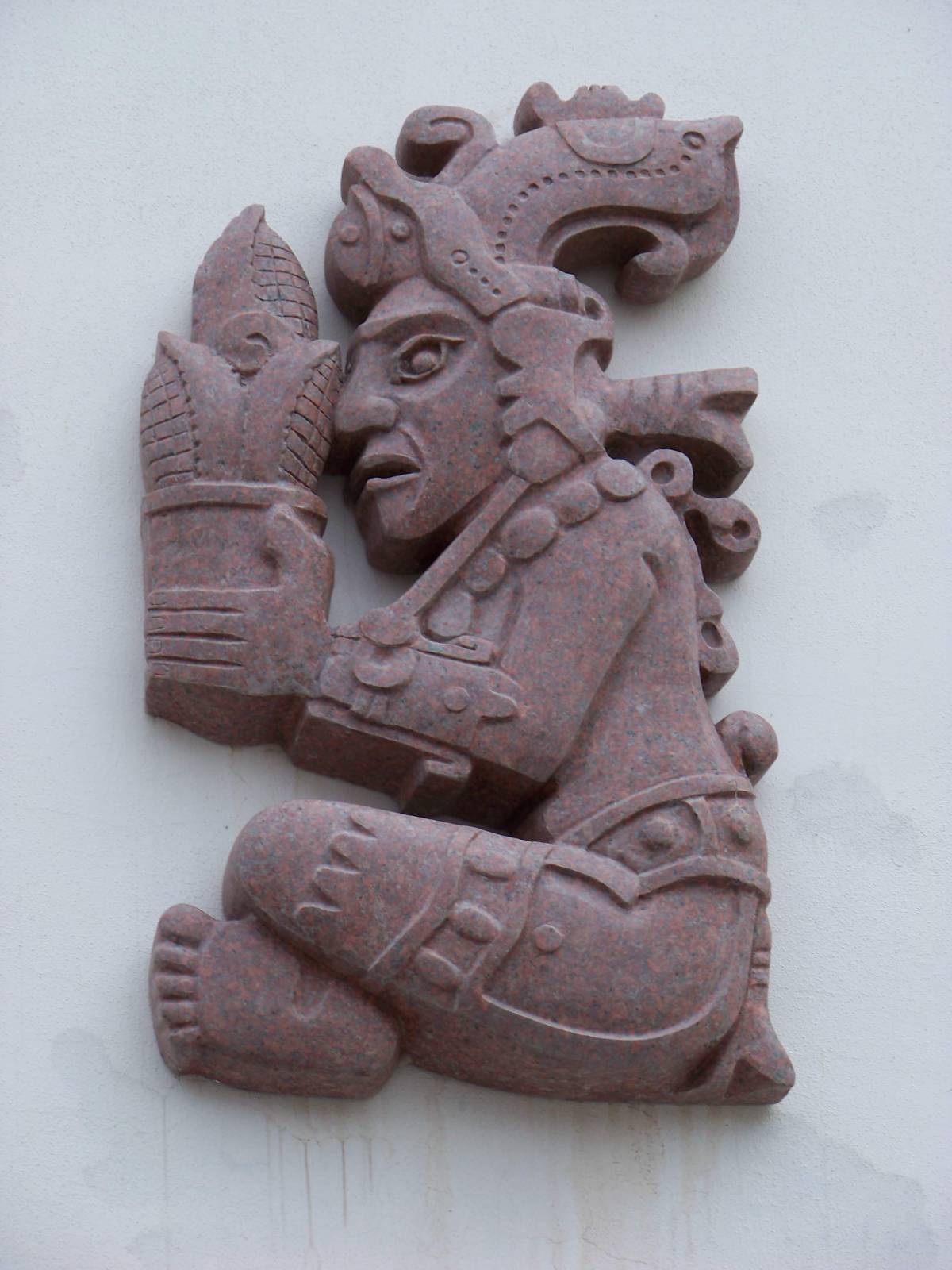Maize was one of the most important Mayan crops, along with manioc, beans, squash, amaranth, and chili peppers. The fruits they ate included avocado, custard apple, guava, papaya, and sweetsop (sugar apple). They made a frothy chocolate drink (Xocolatl) for dessert that was flavored with chili and sometimes honey. Another very popular drink was pulque beer, or octli, an alcoholic beverage made from the fermented sap of the agave. Bottle gourd was grown to make containers from its hard but light-weight shell. Cotton was also cultivated, from which the Mayans wove fine textiles.
The Mayan hunted animals for food including armadillos, deer, duck, peccary, turkey, quail, curassow and guan (wild cousins of the chicken), monkeys and tapirs. Dogs were also eaten that were fattened up on maize. Fish were caught using a variety of nets, traps, and lines, and they even employed trained cormorants, whose necks were tied so that they could not swallow the bigger fish, which they would bring back to the fisherman
Culture and land use
At the time of the European Encounter, the Maya were arranged in small-sized polities consisting of large villages and well-tended landscapes. These villages had a small plaza and a public monument, from which homesteads radiated, each surrounded by stone walls enclosing home and orchard-gardens. The most elite lived closest to the town center. Outside the homesteads were outfields or open fields in various stages of fallow, and managed forests. A wide diversity of the Maya food was grown in orchard-gardens, but the bulk of the maize was produced in outfields. There were also some elite-owned “cacao” stands on the edges of Maya towns.
Eco-geography and agricultural practices
The Maya was spread across a wide geographical area from the Yucatan Peninsula to the highlands of Guatemala (Whitmore and Turner, 1992). The highlands consisted of a broad array of agroecological zones associated with elevation. There was a coastal plain (La Costa) and then the piedmont of the Boca Costa which transitioned rapidly to Los Altos rising to 3,500m, and then falling to 1,500m elevation in a central highland; Lake Atitlan is found in a caldera there at 1566 m. The peaks are in clouds for most of the time and average annual precipitation of 3000 – 4000 mm.
In the lowlands, The Mayans practiced what is called the “milpa” crop-growing system (Ford and Nigh, 2009). The word milpa is derived from the Nahuatl word phrase mil-pa, which translates into “cultivated field.” The milpa cycle calls for 2 years of cultivation and eight years of fallow. In this form of swidden agriculture, cleared plots were first sowed to maize and then intercropped with squash and nitrogen fixing beans. Dried vegetation was collected and burned after harvest each year to provide phosphorus to the soil before the rains began in April. After two-years of cultivation the fields were left to fallow, and the regenerating forest was managed for eight years as an “orchard garden” for fuel and hunting.
The Boca Costa was renowned for producing the finest cocoa in Mesoamerica. The Maya loved cocoa in drinks and the beans served as the most important medium of exchange in Mesoamerica. Elites controlled the majority of the production of and trade in cacao, although the local communities also governed some of the production. At the time of the Spanish conquest, the Aztec were extracting tribute from the cocoa estates of Boca Costa by taxing the towns controlling production, regardless of their location.
In the Los Altos, rainfed cultivation was practiced on both terraced and nonterraced fields in the slopes and depressions. Evidence of at least seven varieties of maize, three of squash, nine of beans, tobacco, and, perhaps, sweet potato has been identified in Los Altos in prehistoric times (Feldman, 1985). Slopes were intensively cultivated, many with terracing, although simple mounding (montones) or ridging (camel) were used where possible to impede erosion.
Agricultural tools and implements
Mayans didn’t have any metal tools, and their farming tools were made from stone and wood. They used stone axes to clear the forest. These axes were comprised of a long shaft of wood and at its end, a piece of sharpened stone was attached. To plant seeds, Mayans used simple wooden sticks to dig small holes in the field.
Illustration:
Caax, Maya God of maize. Modern relief inspired by a hieroglyph. (Teplice Botanical Gardens, Czech Republic) Original image by SIJU. Uploaded by Mark Cartwright for World History Encyclopedia, published on 22 April 2015.
Bibliography:
Cartwright, M. (2015). Maya Food & Agriculture. World History Encyclopedia. Retrieved from https://www.worldhistory.org/article/802/maya-food–agriculture/
Coe, M.D. and S. Houston (2011) The Maya. Ninth Edition. Thames & Hudson, New York
Feldman, R. A. (1985) Preceramic Corporate Architecture: Evidence for the Development of Non-Egalitarian Social Systems in Peru. In Early Ceremonial Architecture in the Andes, edited by Christopher B. Donnan, pp. 71-92. Washington, DC.: Dumbarton Oaks.
Hancock, J. F. (2023) World agriculture before and after 1492: Legacy of the Columbian Exchange. Springer, New York
Whitmore, T. M., & Turner, B. L. (1992). Landscapes of cultivation in Mesoamerica on the eve of the conquest. Annals of the Association of American Geographers, 82(3), 402-425.
